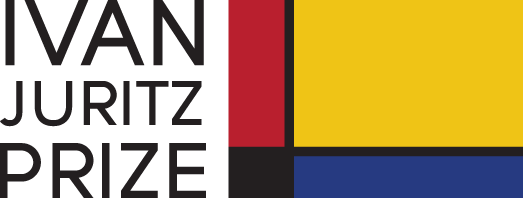
Past Winners
2024
Winner for image: Cat Madden
2023
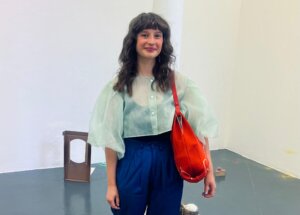
Cat Madden, ‘Problems to Play’
‘I intuitively explore the in-betweenness of things, problems, play, and transformation through installation, object-making, and drawing. ‘Not knowing’ is a space for creative experimentation, problem solving, and discovery.
Drawing is my touch, the traces of accidents, my writing, the experience of searching, of figuring things out, of getting confused.
My process is play – the seriousness of play, the joy of play, the learning from play.
In everyday materials I seek wonder. I fuse things that don’t ‘belong’, I use things that may not last, and I place things you might (nearly) step on.’
Winner for sound: Laura Netz
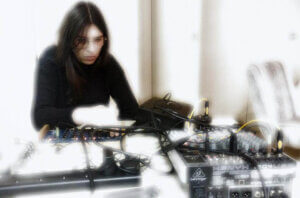
Laura Netz, ‘Medial Dark Ages’
Medial Dark Ages is a piece which uses field recordings, DIY electromagnetic detectors, and open-source electronic instruments. Listening in a different context can surprise us with sounds we didn’t notice before but were always present. Recording nature is a way to document the changing world. I have worked with bats, crickets, and sheep recordings in this composition. I have been experimenting with Bat5 Digital Bat Detector for the bats, which amplifies and filters the bat’s signals. The composition adheres to a postmaterialist perspective on technology, such as in James Bridle – New Dark Ages – and intends to fit music technology in the context of critical thinking and media archaeology theory.
Winner for text: Luke Allan
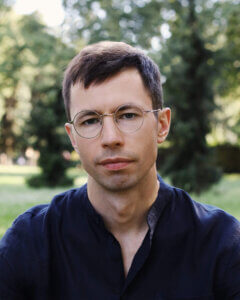
Luke Allan, ‘Death to Books’
‘Death to Books’ mixes lyrical memoir, literary theory, and speculative metaphysics. The essay is made of prose fragments that build into a constellation, recalling similar stylistic experiments by Blaise Pascal, Theodor Adorno and, more recently, Maggie Nelson. The ‘death’ of the title is twofold: on the one hand, the piece memorialises a parent lost to suicide; on the other hand, it describes the author’s experience of losing reading, of falling out of love with books. The essay sets out to understand the relationship between these two ‘deaths’, though its real subjects may be the distractions and lifelines on which the text depends in order to carry on.
Runners-Up 2024
Runner-Up: Image
Bowen Zhang, ‘Ship Mountain Project’
Bowen Zhang is a Chinese artist currently based in London and the Zhoushan Archipelago. Drawing inspiration from his family’s deep roots in fisheries and manual labour, his islander and Chinese diaspora identity, and vast travelling experiences, Bowen’s practice delves into the topics concerning the fishing industry/labour market, power structure regarding gender and class, and leisure tourism. Bowen’s artistic endeavours span mediums such as object-making, writing, social activism, and actions, offering a multifaceted exploration of his heritage and its intersection with contemporary issues.
In his current artistic practice, Bowen addresses performativity and masculinity within the fishing industry and explores the personal and public relationships with labour in mainland China. Additionally, Bowen utilizes the archipelago’s nature to structure art practices and decentralized organizations as well as offering a poetic and political perspective on leisure tourism and its implications.
Runner-Up: Sound
Tiina Myllärinen, ‘Delante – Detrás’
Delante – Detrás (engl. in front – behind) is about communication and being together in a group. The title refers to the musical layers sometimes mixed together, sometimes a musician being in front or behind others; it also refers to vowels the singer makes in the front and back of the mouth and to actual movements, since the players are moving during the piece, making a theatrical element part of the dramaturgy. The point of the piece is to show the difficulty of working together as a group, in this individualistic world where everybody wants to be the one in the spotlight.
Runner-Up: Text
Benjamin J. Larner, ‘Finding Nemo’
Reappropriating modernist poetics (problematically rooted in fascist, racist, and eugenic theory) to explore ethno-liminality and (dis)embodied otherness, ‘Finding Nemo’ employs the ‘Otherised Gaze’ to (de)construct disability/illness and identity (regarded as poieses of seeing and being) and make intersectionally manifest their experiential sphere: a nebulous melding of beauty, strangeness, and – importantly – grief. Inhabiting difference, the splicing of multitude ethno-cultural signifiers into a subversively uncanny holism, this work seeks to disembody the foundationally supremacist, able-bodied normativity of the Eliotesque/Poundian modernist text whilst re-embodying that very mode of poetic textuality as an expression of protean Crip alterity – something ungraspably fluid and ecstatically other.
2023
Winner for image: Sofia Haapamäki
At the core of Sofia’s artistic exploration lies a deep interest in humanity itself. Her works investigate the individual as a unique force entangled within this complex world. Rather than perceiving the concept of self as uniform or undivided, she is intrigued by the multitude of aspects that constitute our being, and the dialogues that occur between these different versions of ourselves.
Winner for sound: David de la Haye
Plant Based Patterns is a response to a soundscape that has existed for millennia yet remains a mystery to many even now: the sound of freshwater plants. A trio of improvising musicians created new repertoire based on underwater recordings collected in the North East of England. These became the raw materials for the piece, which imagines an historically industrialised area through the lens of aquatic ecosystems. It attempts to illustrate the interconnectedness of our acoustic landscape and evoke interspecies dialogue, serving as a timely reminder that nature’s complex beauty continues to inspire cultures even in an age of technological innovation.
Listen to ‘Plant Based Patterns’ here
Winner for text: Bebe Ashley
[have] [have doubts] [harbour doubts] is a poetry collection that somewhat charts Bebe’s desire and progress to qualify as a British Sign Language interpreter. The tri-part structure demonstrates three approaches to the work over the three years of writing it. [have] begins with relative traditionalism, [have doubts] remains a single poem section representing the disruption and grief of the pandemic, and the collection concludes in the sequence [harbour doubts]. This experimentational translation from BSL to English features a linguistic commentary that explores the literal and figurative symbolism of BSL while antagonising a personal narrative.
Read ‘[have] [have doubts] [harbour doubts]’ here
Runners-Up
RAGNHILD MAY (image)
The installation ‘Institutional Critique for Kindergarten’ reflects on children’s education and the cultural history of whistles, as well as the relation between body and instrument. It asks the questions: How does the shape of the instrument affect the sound that they produce? Can we imagine other kinds of instrumental practices? The installation consists of two upscaled whistles made of pine and oak, large scale graphic scores and a multi-channel sound installation comprising a poly-rhythmic composition for whistles, made with a computer controlled whistle instrument, designed by the artist. The instrument makes very advanced polyrhythms possible, polyrhythms so complex that they are impossible or very difficult to play for humans, but simple to create on a computer, thus mixing digital with analog or creating techno music for whistles.
View ‘Institutional Critique for Kindergarten’ here
TOMÁS BRANTMAYER (sound)
‘Morbus Sacer’ is a piece for orchestra based on the medical examinations and the experiences produced by the epileptic crises that Tomás has suffered since he was 8 years old. The score includes graphic material taken from his neuronal activity and extracted from various electroencephalograms carried out over more than 20 years. In the same way, some motifs and sound effects present in this music have been derived from the sounds that can be heard during an MRI. On the other hand, the character and spirit of the piece are freely based on Tomás’ own experiences and vague memories during and after the crises. Through a dynamic and vertiginous orchestration, and textures with aleatoric components, this work intends to represent the imbalance in the electrical activity of his brain, and the implications that this has on a physical, emotional and social level. In this sense, ‘Morbus Sacer’ is an autobiographical work born from the physical experience imposed by Tomás’ own body and his own disease.
Listen to ‘Morbus Sacer’ here
SUSANNAH DICKEY (text)
Oh! is a resistant elegy, existing in ‘the wake’ of ecological violence. It takes inspiration from Christina Sharpe’s writing, which addresses how ‘living in the wake on a global level means living the disastrous effects of […] imperialisms / colonialisms, and more’. The poem ruptures chronology and attends to loss, challenging imperialism’s focus upon linearity and progress. Influenced by Bennett’s Vibrant Matter, Riley’s Impersonal Passion, and Butler’s Precarious Life, Oh! rejects the traditional elegiac subject and centres the non-human. By engaging with language’s vibrancy, and by thinking about the violence of our refusal to mourn the earth, Oh! rails against the limits of its poetic antecedents.
https://lifeboatpress.com/shop/oh-by-susannah-dickey
2022
Winner for image: Kaifan Wang
Building a wall to make supposed borders visible and to include and exclude people has always been a national principle and political concept. I make feelings of great anxiety and insecurity tangible in my multiform installation Wall woodpeckers. The mattresses come from students who had to return from Germany to their home country China due to the pandemic. On the one hand, I have tightly tied up the mattresses in which the student’s bodies are inscribed; on the other hand, they appear full of tension. In this context, the tiny ceramic objects, resembling nails, circling the rolled up mattresses cause feelings of fear and threat. The painting in the background evokes a hopeful yet ominous mood in the spectrum of the scene.
View images
https://wangkaifan.com/
Winner for sound: Robert Laidlow
Warp is about paradoxes, about push and pull, about relationships between players and instruments and between a soloist and an orchestra. I’m interested in the idea of a musical fabric – translating Einstein’s understanding of spacetime as a dynamic fabric which can be moulded or warped by objects in the universe. Here, the orchestra is a kind of fabric, a shifting set of geometric patterns that underpin the entire piece. As the music develops, this fabric is simultaneously stretched and crushed, sped up and slowed down and twisted to its extremities while the piano sits in the middle, a travelling spaceship inside a ‘warp drive’. Performed here by the BBC Philharmonic with soloist Joseph Havlat, conducted by Vimbayi Kaziboni.
Winner for text: April Yee
Dissection Nation examines sexual violence, medical inaction, and military intervention in and out of Vietnam, and the reimagining of these traumas within individuals. This selection includes an erasure of a conversation between Kissinger and Nixon, a terza rima about babies born with Agent Orange defects, and a sequence narrated by a contemporary carp-girl. Carp swim at the centre of ‘Tấm and Cám’, a cannibalistic Cinderella story whose suffering heroine is counselled by a sentient fish. Other influences include Deborah Paredez’s docupoetic text Year of the Dog, Nguyễn Phan Quế Mai’s novel The Mountains Sing, and Terrance Hayes’s body of work.
Runners-Up
ADA HAO (image)
‘ConTactic’ is an audio-visual interactive performance that explores playful ways to navigate between the physical and virtual spaces as the human body is situated to embody the unknown, the peripheral and ephemeral experiences and visions of thought. It draws together virtual contact improvisation, telematic technology, gesture modulated sound, and synaesthetic somatosensorial perception of touch and proprioception to equip the human body to become an archive and a conductor for a union of senses (such as virtual hapticality, audio-visual synaesthesia, and affect) to be mediated by technology, and to be perceived as a new tele-techno-sensation, like synaesthesia, a neurological condition that allow an individual to sense across different sensual modalities. The project is derived from the ongoing collaboration across the North Atlantic Ocean between choreographer Joan Gavaler (Virginia, US), poet Lewis Feemster (New York, US) and Ada Xiaoyu Hao (London, UK). The project invites us to feel the surface we are in contact with, to be in touch with the sound of the human and non-human others, to cast our immediate present, and to dream about the desired future in relation to the potential possibilities in reality.
View the works here and here.
LISA BARNARD
S”mming [live] pathologising [ifi4its] and restaged made, in a staged se8ng, repeat non – eye – contact – contact is a reproduction of self-stimulation, or stimming, actions performed by the artist to the
camera. The heightened sound of static, pulled through the drawstring cord, takes the listener to an enclosure where language is shown to be perpetually undone and redone. Linked with neurodivergence and sensory sensitivities, a need to stim can drive a body to seek out repetition, amplification and movement. It is frequently pathologised and perceived as awkward to accommodate. S”mming [live] … considers how echoes can shift things and make way for different
messages and sensations.
YANITA GEORGIEVA
Speaking Practice is a sequence of poems exploring two predetermined aspects of identity – a mother tongue and place of birth – and the expectation of belonging to either of them. The work uses white space and omission to mirror the limitations of language and interrogate the role of motherhood in speech. As someone who grew up switching between three native tongues, Yanita hopes to highlight how shifting the connection to language can be in an immigrant life: between intimacy, disconnect, and forced separation.
2021
Winner for text: Nick Makoha (King's College London)
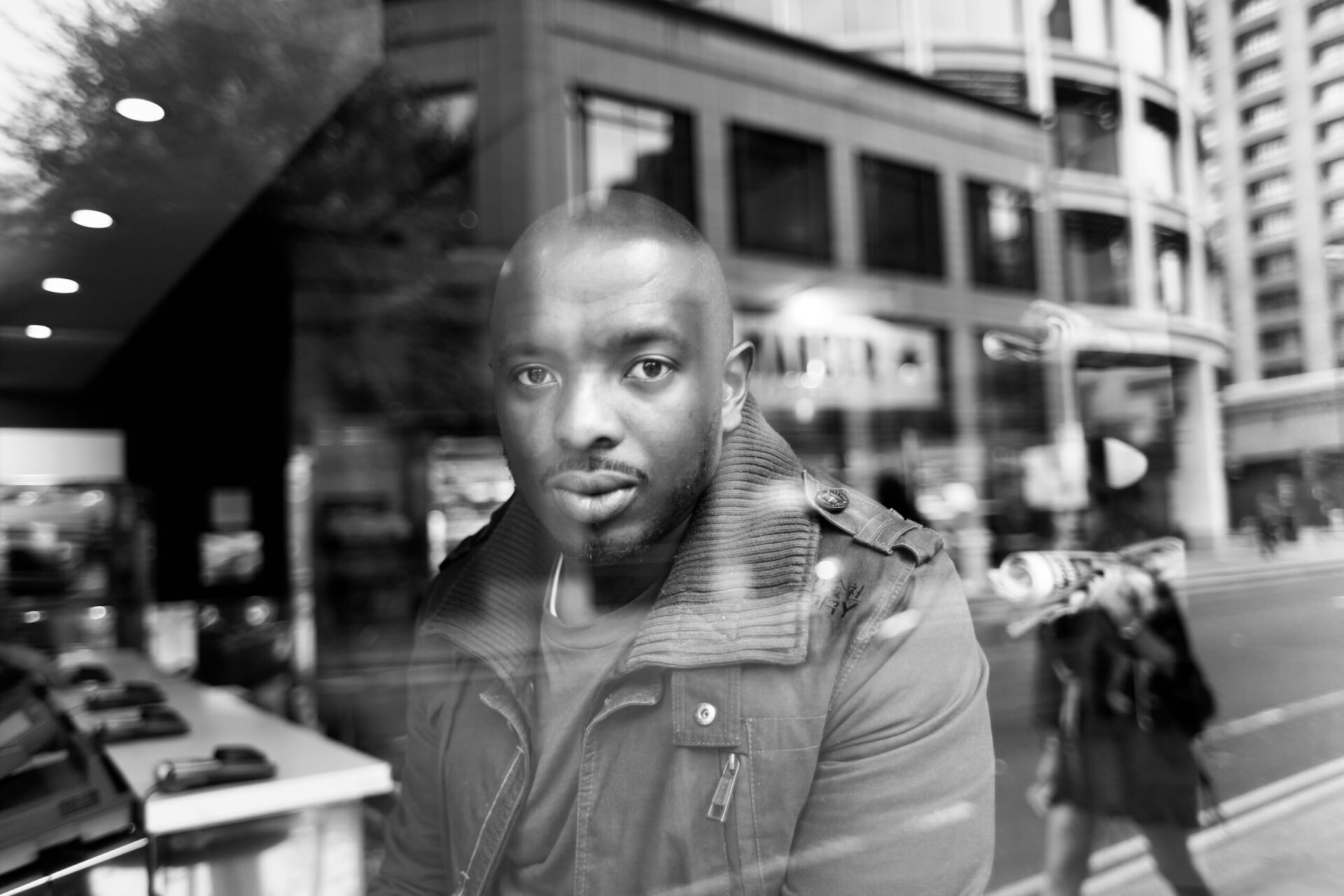
Selection from ‘A Low-Pressure System’
Nick Makoha is the founder of The Obsidian Foundation. In 2017, Nick’s debut collection, Kingdom of Gravity, was shortlisted for the Felix Dennis Prize for Best First Collection and was one of the Guardian’s best books of the year. Nick is a Cave Canem Graduate Fellow and the Complete Works alumnus. He won the 2015 Brunel International AfricanPoetry Prize and the 2016 Toi Derricotte & Cornelius Eady Prize for his pamphlet Resurrection Man. His poems have appeared in the Cambridge Review, the New York Times, Poetry Review, ‘e Rialto, Poetry London, TriQuarterly Review, Boston Review, Callaloo and Wasa#ri. He is a Trustee for the Arvon Foundation and the Ministry of Stories, and a member of the Malika’s Poetry Kitchen collective.
A Low-Pressure System is part of sequence that explores the Entebbe hijacking in 1976. It is a dramatic retelling of those events, paralleled against Nick’s life, and key historic events and other intertwining material linked by the motif of flight. It hopes to expand on the range of viewpoints usually brought to bear on this story. Nick uses airport codes as the titles of poems, and as points of inquiry about liminality at airport terminals, as well as poems of the immigrant experience. The motif of flight is rendered through the myth of Icarus and and Basquiat who painted Icarus Esso, 2002.
Runner-up for text: Mischa Foster Poole (Birkbeck, University of London)
Prize judge, Will Eaves, described A Dictionary of Neurological Signs as “a small triumph of weird science and even weirder poetics, as though Daniil Kharms and the Futurists had been put in charge of the General Medical Council. The poems dramatize their unusual conditions (such as the inability to point to parts of the body) with a battery of effects – corrupted repetition, word distortion, musical allusion, brilliant juxtaposition – and make a case for “nonsense” verse as something more than “an appeal to the Unconscious” (Auden). In Mischa Foster Poole’s hands, it is a revealing symptom of political distress, and a reminder of how easily writers and diagnosticians alike can become officious and doctrinaire.”
Winner for sound: Erchao Gu (Guildhall School of Music and Drama)
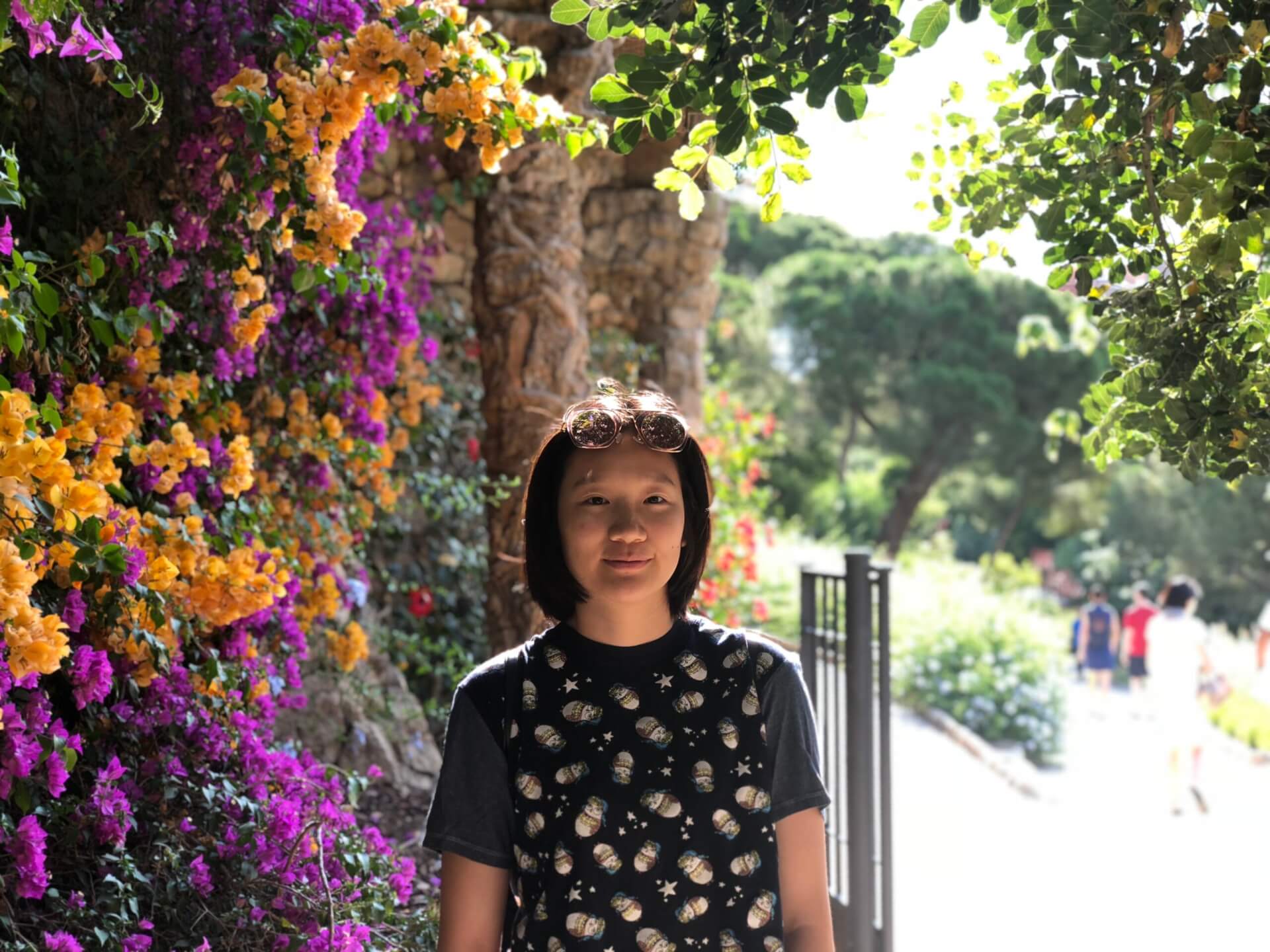
A virtual tour of a virtuous place
A local of Wuxi, Singapore and London, Erchao Gu is a composer, cultural bridge builder and music educator. Her music has been heard at Barbican Centre’s ‘Beethoven Weekender’, ‘Sounds Like THIS’ festival in Leeds and The Place Theatre, London. She has enjoyed the opportunities to work with leading new music ensembles and artists such as Quatuor Bozzini, the Ligeti Quartet, Aisha Orazbayeva and EXAUDI. After graduating from King’s College London with a First Class (Honours) in Music in 2019, Erchao is now completing her Masters in Composition at the Guildhall School of Music and Drama under the supervision of Professor Julian Anderson, with generous support from the China Scholarship Council and the Guildhall School Trust.
Written for leading new music vocal ensemble EXAUDI, setting words by Arthur Rimbaud, A virtual tour of a virtuous place launches a curious investigation into the notion of ‘rented afterlife’ within London’s (in)famous property market. Completed during the first lockdown in 2020, this piece strives to capture an intimate sonic snapshot of the period of collective isolation we have all experienced over the past year.
Runner-up for sound: Sońa Vetchá
The orchestral piece Cuts is inspired by the subjective perception of the listeners, musical paradoxes and psychoacoustics. As the title suggests, during this piece, our perception flows in a landscape of unrelated blocks, composed from sudden or slower musical cuts. The aim of the composition is to manipulate the listener’s variable perception. It is based on the various types of contrasts that form and timing work with, mostly unpredictably, during listening.
Winner for visual arts: Edward Gwyn Jones
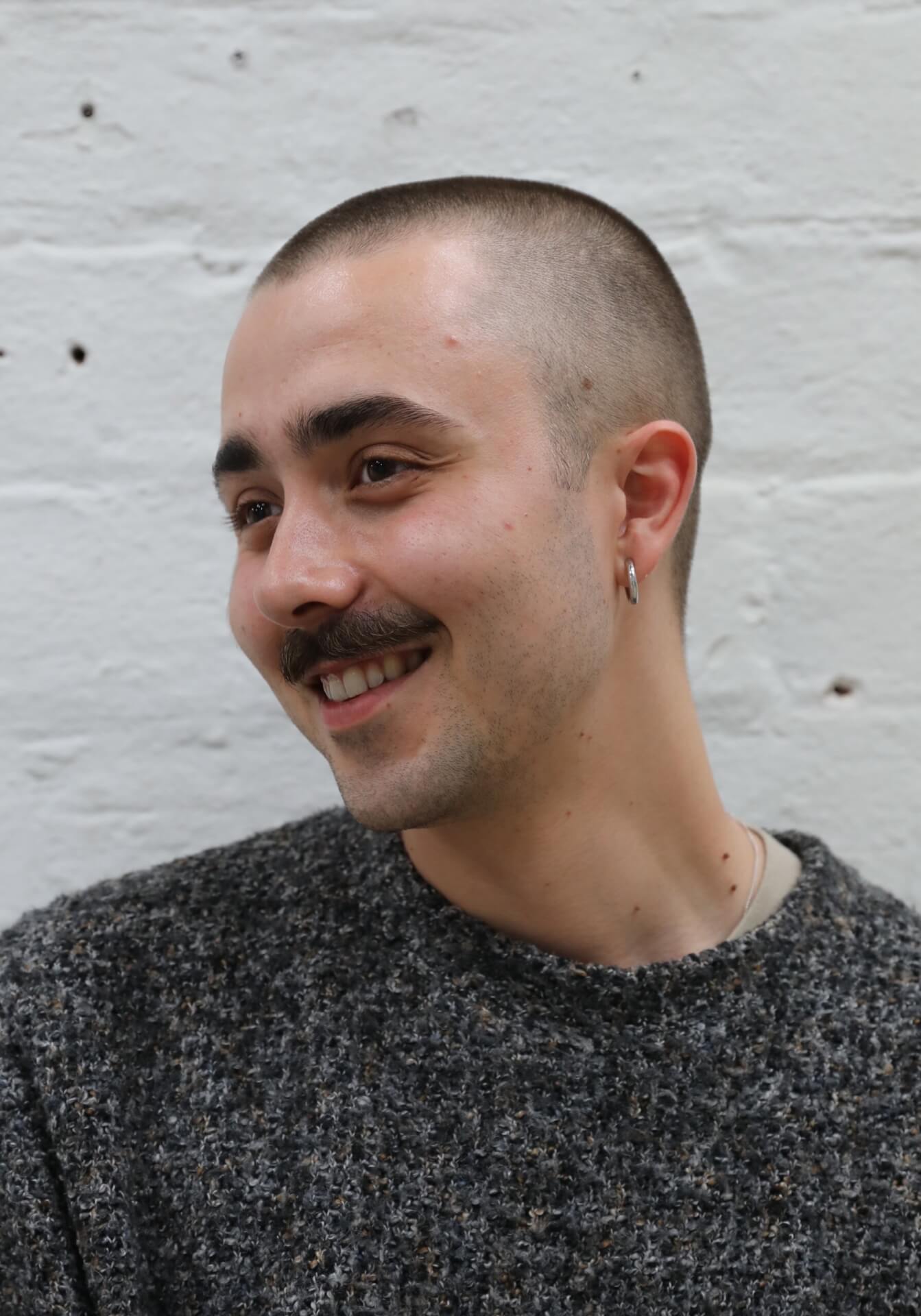
Edward Gwyn Jones (he/him, b.1997, Stoke-on-Trent, UK) works primarily with moving image. His work utilises appropriated moving images, artefacts, and sound to antagonise the relationships between perceived concurrent binaries and how they inform collective and individual postulations of time. Ed graduated from Manchester School of Art in 2019 with a BA (Hons) in Fine Art, Sculpture and Time-Based Arts, and received his MFA from the Glasgow School of Art in 2021.
Inspired by an absurd story by Peter Gabriel, Genesis indulges in moments of ‘switch’ and explores our relationship to artificial light. The artefacts and appropriated characteristics of modernist design in the video form the edges of a world built on convoluted references, while the decidedly twee Englishness of Gabriel’s fable help reinvent electricity and light in moral terms.
Camera assistance by Lydia Davies
3D Modelling by Jay Mulholland
Runner-up for visual arts: Rachel Bacon
Ivan Juritz Judge Josephine Pryde described The Other Orebody as “thoughtfully compiled and beautifully photographed, laid out with an admirable and expressive economy of means… The vibrancy of the drawings and their technique leap off the screen, while the thoughtful research behind the pieces makes itself felt in a variety of ways, prompting us to see and to comprehend on several levels at once. The nature of the surface, the organisation of the grid, the marks and fissures of a landscape and an excavation recalled but not imitated. It was striking to receive such a sense of the tactile in a time of reduced, or restricted, sensory experiences.”
2020
Winner for Text: Suzannah V. Evans (Durham University)
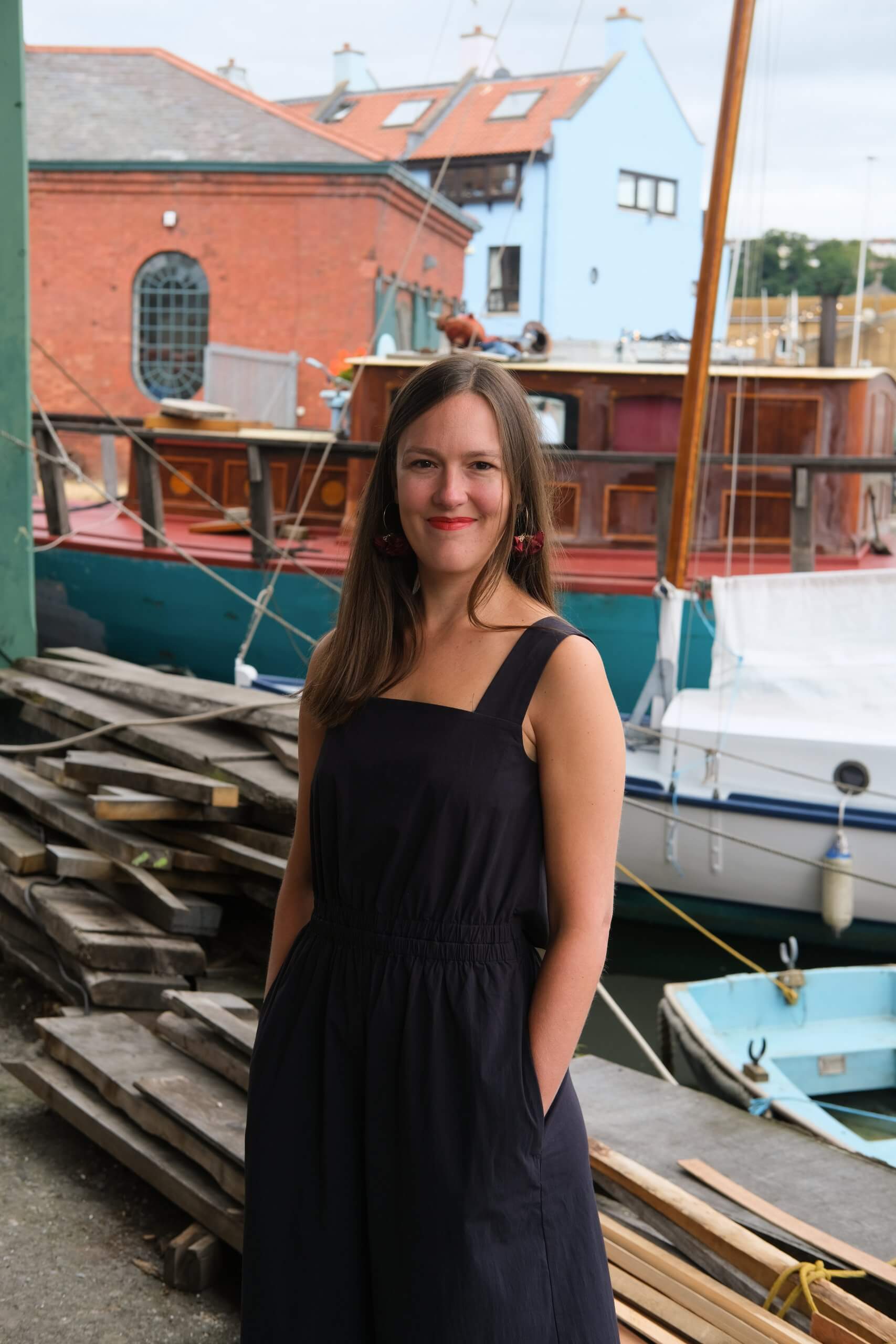
Suzannah V. Evans has published poems in PN Review, The London Magazine, The Scotsman, and elsewhere, with others broadcast on BBC Radio Bristol. She has read her work at Keats House, London, where she organised Keats House: New Poets, for York Literature Festival and StAnza Poetry Festival, and at Underfall boatyard in Bristol, where she was poet in residence in 2019. She is an AHRC-funded doctoral researcher at Durham University and the winner of a 2020 Northern Writers’ Award from New Writing North. Her debut double-pamphlet Marine Objects / Some Language was published with Guillemot Press in April 2020.
Evans was awarded the Ivan Juritz Prize for poems from her collection Brightwork, also due to be published by Guillemot Press. These poems, written during a residency at Underfall Yard, a working boatyard in Bristol, have shape and objects at their heart. Brightwork is intended as a close reading of place, and of the objects in that place, borrowing theoretically from the French prose poems of Francis Ponge, some of which Evans translates. The poems also nod to the subtle calligrammatic qualities of Ponge’s writing, and to Jones’s attention to the language of boatbuilding in The Anathemata.
Runner up: K Patrick (University of Glasgow)
Judge Richard Scott comments that K Patrick’s ‘S. at the Beach’, “interrogates queerness and carves out a place for trans bodies and trans sexuality in modernism and indeed in literature. What at first begins as relaxed, vernacular and meandering soon reveals itself to be a deeply resonant and tightly structured piece which simultaneously places bodies and the natural world under the stress and wound of language and observation.”
Winner for Sound: Demian Rudel Rey (Conservatoire National Supérieur Musique et Danse de Lyon)
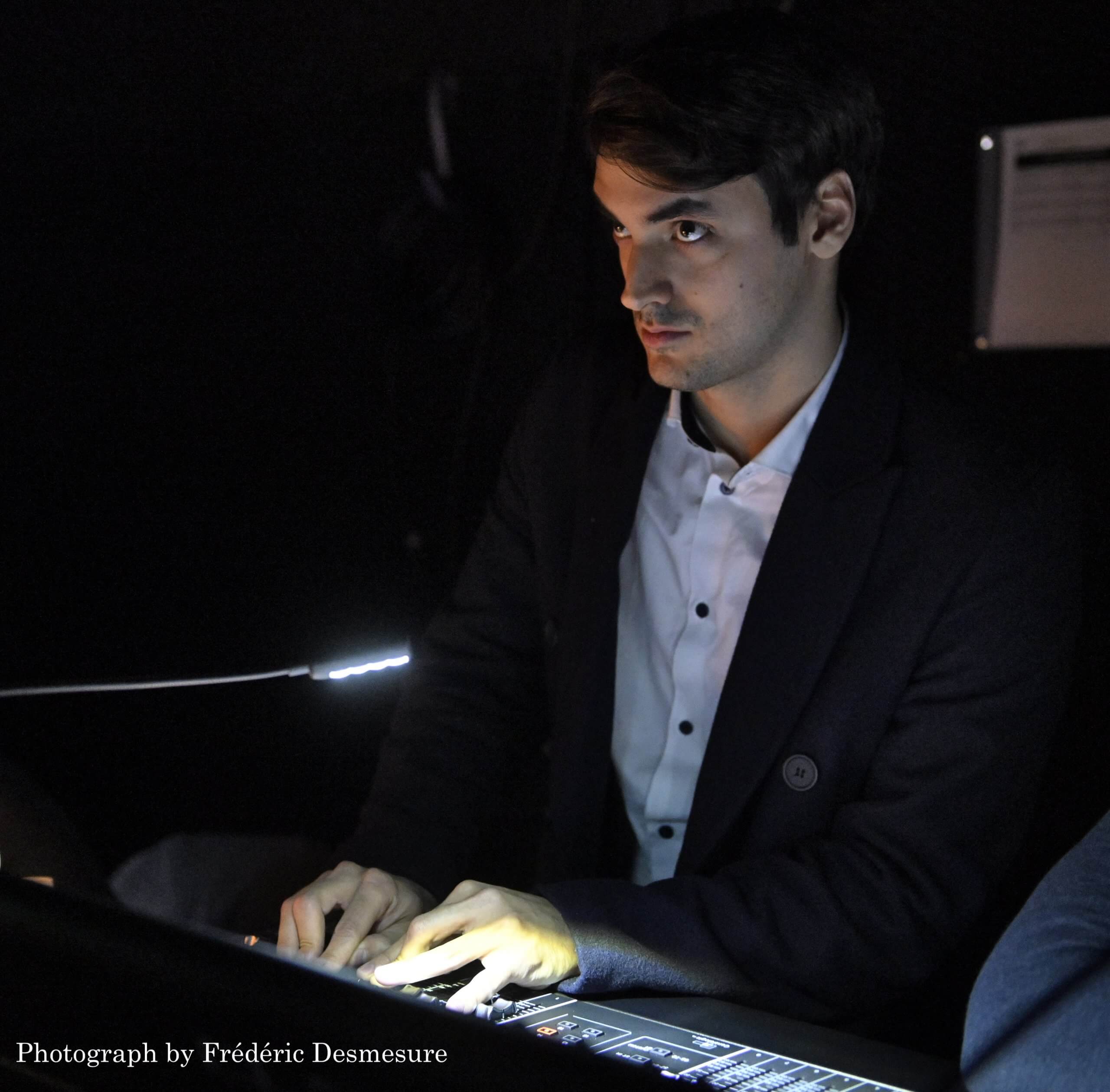
Demian Rudel Rey, born in Buenos Aires, is a composer of instrumental, mixed, electroacoustic and visual music. In Argentina he obtained two diplomas in guitar and a BA in Composition, before receiving a Masters in Composition at the Conservatoire National Supérieur Musique et Danse de Lyon, France, where he is now completing a post-masters qualification. He has won numerous national and international composition competitions, and his work has been performed at festivals around the world. www.demianrudelrey.com.ar
Cuélebre (2019) is a composition for ensemble and electronics, commissioned by the Proxima Centauri and dedicated to Philippe Hurel. It is inspired by a legend of Asturian mythology, and is also linked with the text El Libro De Los Seres Imaginarios, a catalogue of fictional animals by Jorge Luis Borges. The cuélebre is a type of winged serpent, and Rudel Rey’s composition is inspired by its hybridity to create chimeras between contrasting sounds.
Runner-up: Erchao Gu (Guildhall School of Music and Drama)
Inspired by the third movement of Alban Berg’s Lyric Suite, Erchao Gu’s entry for string quartet, titled movement, explores and evokes multiple meanings and experiences of the title word outside the musical world.
Winner for Visual Arts: Elisabeth Brun (University of Oslo)
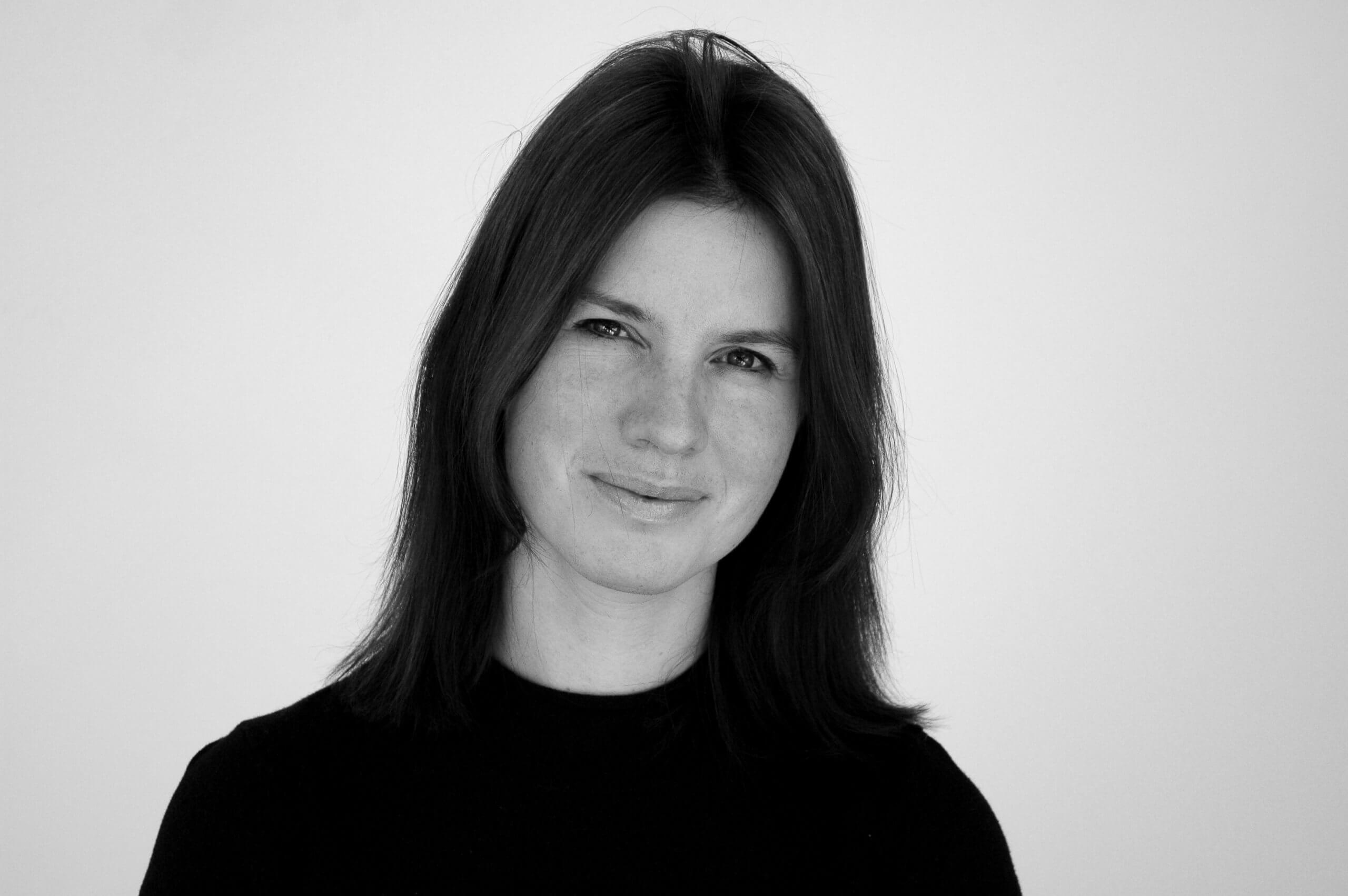
Elisabeth Brun is a Norwegian filmmaker and scholar, who previously worked as a journalist and documentary film director in Norwegian Public Service Broadcasting (NRK 2001-2013). Recently she submitted an experimental PhD on the intersection between documentary, art/design and philosophy. (Department of Media and Communication, University of Oslo).
She was awarded the Ivan Juritz Prize for her 7-minute film, 3xShapes of Home. The film is a topographical moving image experiment made as part of her PhD-project “Essay Film as Topography: explorations of place through moving image thinking”. The film explores forms and dynamics in environments and their projective powers for the imagination of place, engaging with formal experiments of early modernist filmmakers such as Dziga Vertov´s Man with a Movie Camera (1929), a pioneering film-example of conceptual form being derived from the patterning of experience and not from any external rule.
Runner up: Soojin Chang (Glasgow School of Art)
‘The Nurse’ explores a monstrous-surrogate’s desire to move closer to an ‘animal state’. It begins with the chimera performing Mukbang, or food eating show, consuming rabbit mochis, and progresses with the chase of a single rabbit ear that is stripped away from inside her body. Through animal masks, food-symbols, and performance, the work alludes to mythological associations of the hare.
2019
Introduction to the 2019 Prizegiving
Winner for Text: Kathryn Maris
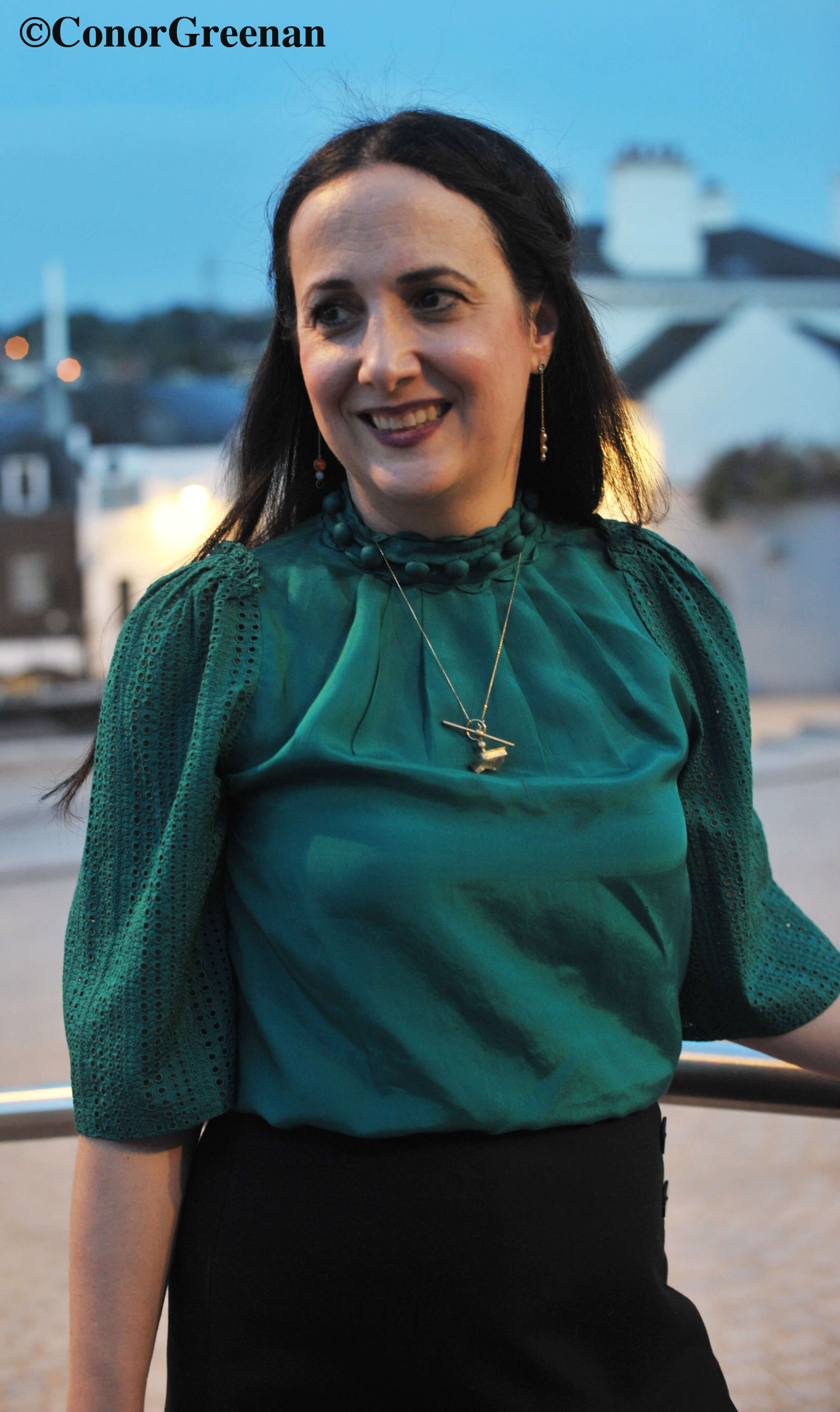
The House of Atreus and other poems
Kathryn Maris is an American-British poet and critic who has published three poetry collections, most recently The House With Only An Attic And A Basement (Penguin 2018). Her work has appeared in Penguin Modern Poets 5, The Pushcart Prize Anthology, The Best British Poetry, The Forward Book of Poetry, Granta, Poetry and The Financial Times. She teaches at the Poetry School in London, and reviews fiction and poetry for the TLS. Twitter: @KathrynMaris, Instagram: @kooxiekyrie
In the House of Atreus sequence, Maris reworks the story of Clytemnestra and her family, using found text, syllabics and ideas derived from Sigmund Freud and Melanie Klein. Depicting conflicts within the self as well as the confusion and cruelty of modern life, these poems rise and fall between the heroic and the bathetic, synthesising influences from Gertrude Stein, Wallace Stevens, William Carlos Williams and Marianne Moore.
Runner up
Helen Charman, (PhD, English Literature, Trinity Hall Cambridge)
A spirited response to institutional sexual harassment and gendered power imbalances, this is a long poem in dialogue with the great long poems of the modernist era, sharing their interest in mixing high and low registers and in allowing multiple readings and interpretations.
Winner for Sound and Music: Manos Charalabopoulos
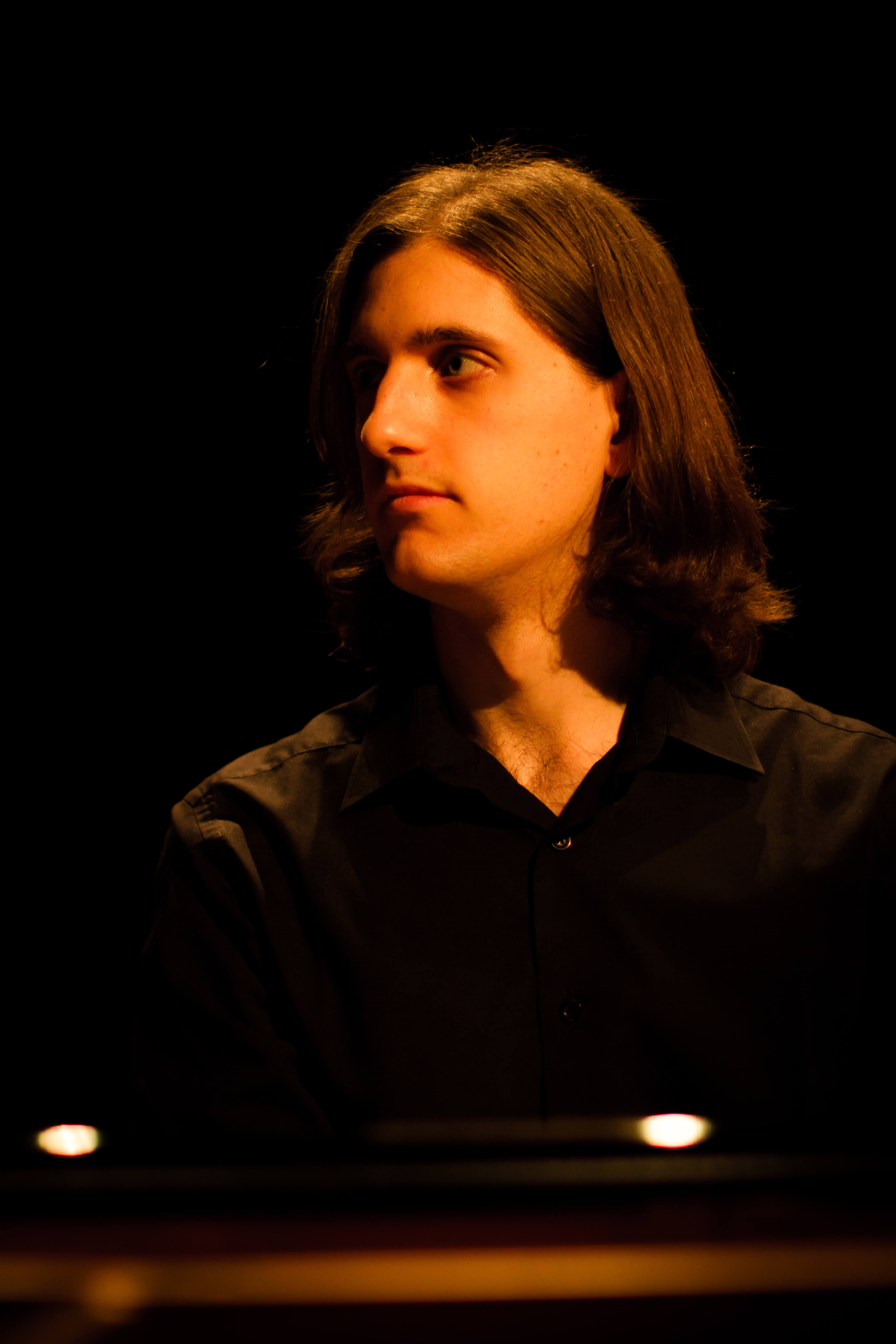
Manos Charalabopoulos is a Greek-British composer and pianist. He has collaborated with acclaimed musicians and ensembles including Joanna Gutowska, Henry Chandler, Alex Edmundson, Accroche Note, Hezarfen Ensemble and Bristol Ensemble. His latest album, ‘Espelho Duplo–Double Mirror’, features solo piano music by Brazilian composer André Luiz Machado.
In Charalabopoulos’s work ‘Two Poems’, one imagined and one actual poem (Alan Shapiro’s Everything the Traffic will Allow) have had their words removed and their music given to the instrumental voice of the cello. These instrumental voices and recitations, be they projected or introspective, engage with a hyperrealist aesthetic, where instrument becomes voice and word becomes music, at once abstracted and enlarged.
Runner up
Lewis Coenen-Rowe (PhD, King’s College London)
The Storm is a short chamber opera that adapts Kate Chopin’s 1898 short story of the same name. In the story, Chopin juxtaposes the external objective world of the storm and the internal subjective world of the characters. Coenen-Rowe responds to this by combining music that actively reflects the characters’ psychology with music that’s deliberately un-expressive, and by using musical structures that avoid fulfilling expected resolutions.
Winner for Visual Arts: Claire Michel
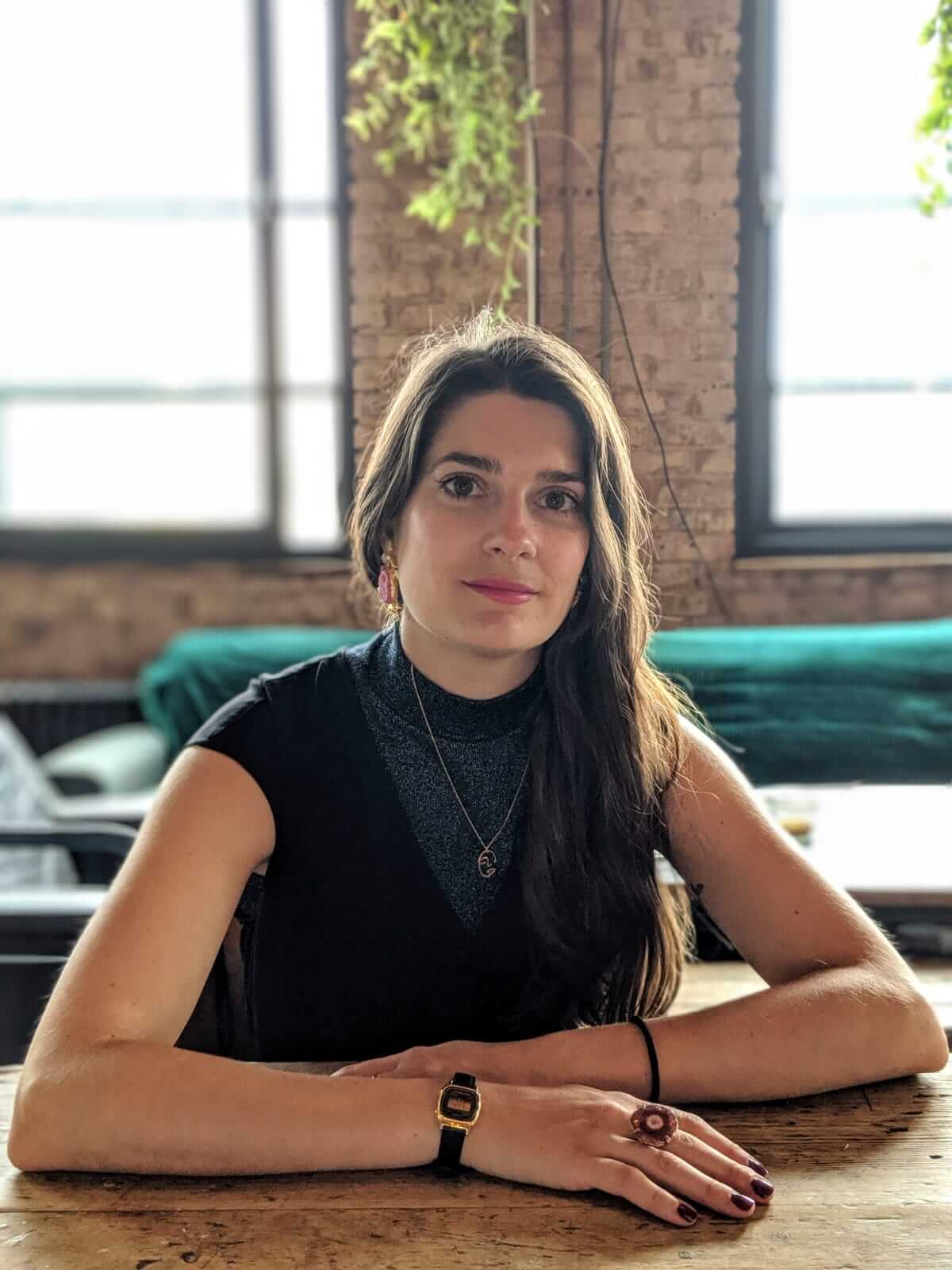
Michel is a Fine Art artist, working across different media such as performance, moving image and drawing. She is currently undertaking an MFA in Fine Art at Wimbledon College of Arts and was awarded the 2018-2019 Wimbledon Trust Bursaries. www.claire-michel.com
The short film ‘Suspended’ shows Michel dismantling the peculiar collection of objects arrayed on the ceiling of her recently deceased father’s bedroom. The footage, stripped of emotion by being speeded up, contrasts with the lyrical tone of the narration, in which Michel recalls painful details from her father’s life and her own childhood.
Runner up
Sam Schmitt (MFA, Goldsmiths)
Shadeshelter
A provocative but appropriately organic response to climate change, ShadeShelter’s images are of the aftermath of hurricanes, never of the hurricane itself. The installation contrasts images of detritus with the calm complacency of ambient music and atmospheric sounds from the cold of winter.
2018
Introduction to the 2018 prizegiving
Winner: Cat Woodward
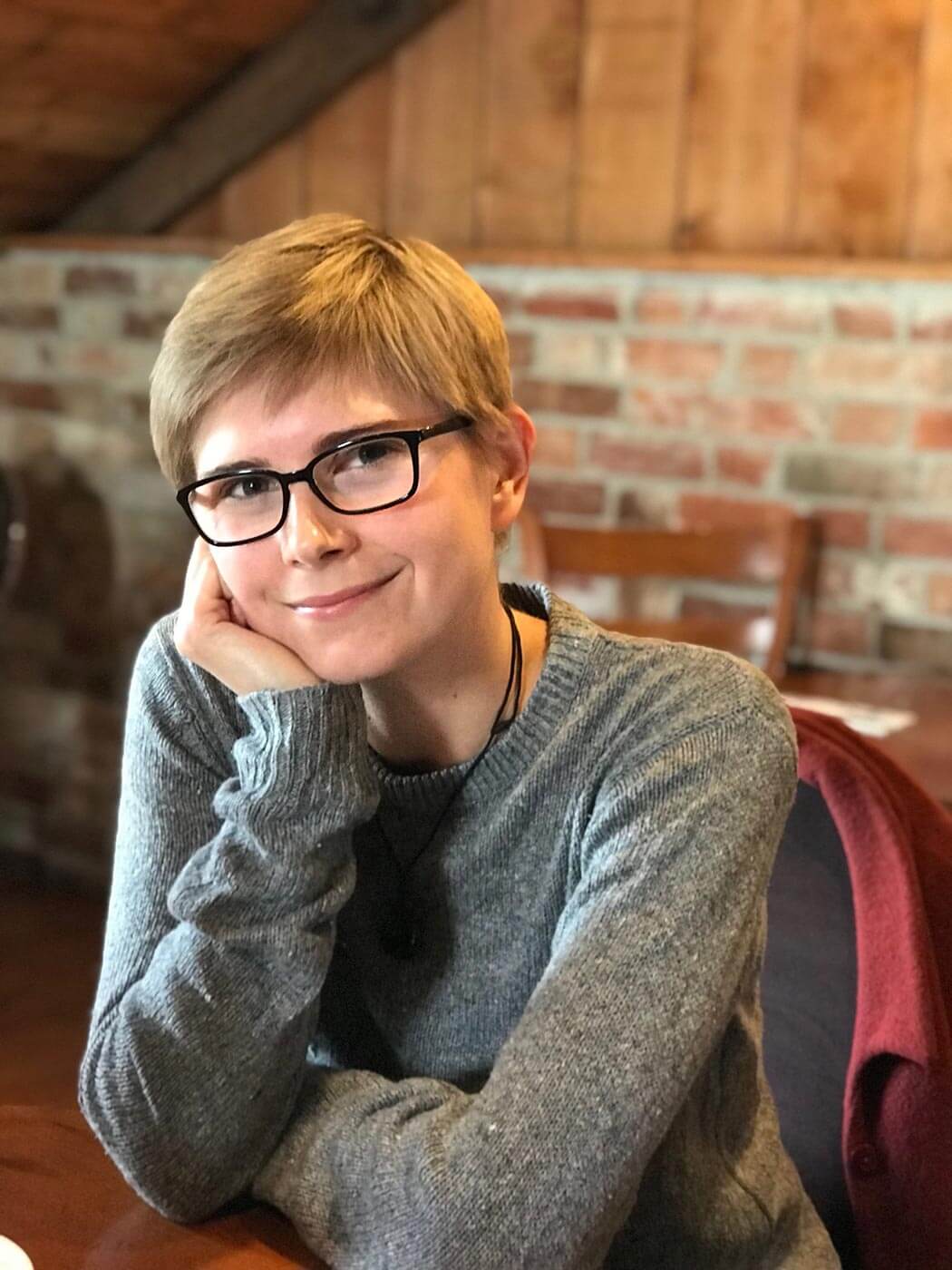
Cat Woodward is a feminist lyric poet, she lives in the UK and New Zealand. In 2014 she was awarded a CHASE studentship to study for a PhD at the University of East Anglia, her thesis develops a poetics of robot-lyric voice. Her first poetry collection, Sphinx, was published by Salò Press in 2017. She has been published in Datableed, The Literateur, Lighthouse, Tears in the Fence and others. More information at www.catwoodward.com.
This year’s prize was judged by Rachel Cusk, Jeremy Harding, Gillian Wearing and Ryan Wigglesworth.
Jeremy Harding writes ‘This year’s entries for the Ivan Juritz prize are a superb crop. From installations and performance pieces to texts, paintings, film and musical composition, the submissions are all strong; some are outstanding. A great year for the prize, and ample evidence that a healthy curiosity about form and the modernist legacy is alive and well.’ Of the winner he adds, ‘Cat Woodward describes her sequence Away My Grievance as a quest for ‘a new modern lyric answerable to our current modernity’. The poems — 36 in all — are fully confident and beautifully voiced, sometimes by an authorial ‘I’, who inhabits them fitfully, but mostly by another version of the first person speaking clearly from within the work itself — the ‘I’ of the poems. In her presentation Cat Woodward asks: ‘How far can I push the poetic operations of the lyric subject?’ Not much further, if these are anything to go on. A poetry entry for the Ivan Juritz prize isn’t necessarily asking for the same sort of judgment as a submission to a poetry editor. But the judges were lucky this year: we happened to be reading lyric verse of a high order.’
Cat will receive £1000 and two weeks’ residence at Cove Park. Extracts or accounts from each shortlisted entry will be published in the journal Textual Practice.
Runners up
Maciej Bałenkowski
(PhD candidate, composition, Academy of Music Krakow) ‘Sinfonietta – Time is ticking‘. A sound recording of a sinfonietta for string orchestra full of frequent changes in time.
Performed by Sinfonietta Cracovia, cond. Jurek Dybał
Anna Cathenka and Alice Willitts
(M.A. Creative Writing Poetry, UEA), ‘p0_EM Stein1′. ‘p0_EM Stein1‘ reveals a new poetic process, built on Gertrude Stein’s language experimentation, that adapts a laboratory protocol for plasmid DNA extraction.
Effy Efthymiou
(PhD candidate, composition, King’s College London) ‘Even if it is Only a Whisper‘. A composition of largely unchanging dense texture comprised of repeated semiquavers and demisemiquavers from which small cells of melody grow, repeat and augment, but do not develop.
Daniel Fígols
(PhD candidate, composition, King’s College London) ‘Tox‘. For ondes martenot and piano, this piece aims to express an acoustic and energetic process between these two instruments with so different timbre.
Gabriella Hirst
(MFA in Fine Art Media, Slade School of Fine Art), ‘Force Majeure‘. A performance piece comprised of repeated trials at the same experiment: to paint a storm whilst in the midst of one, and to film these efforts.
2017
Winner: Grzegorz Stefanski
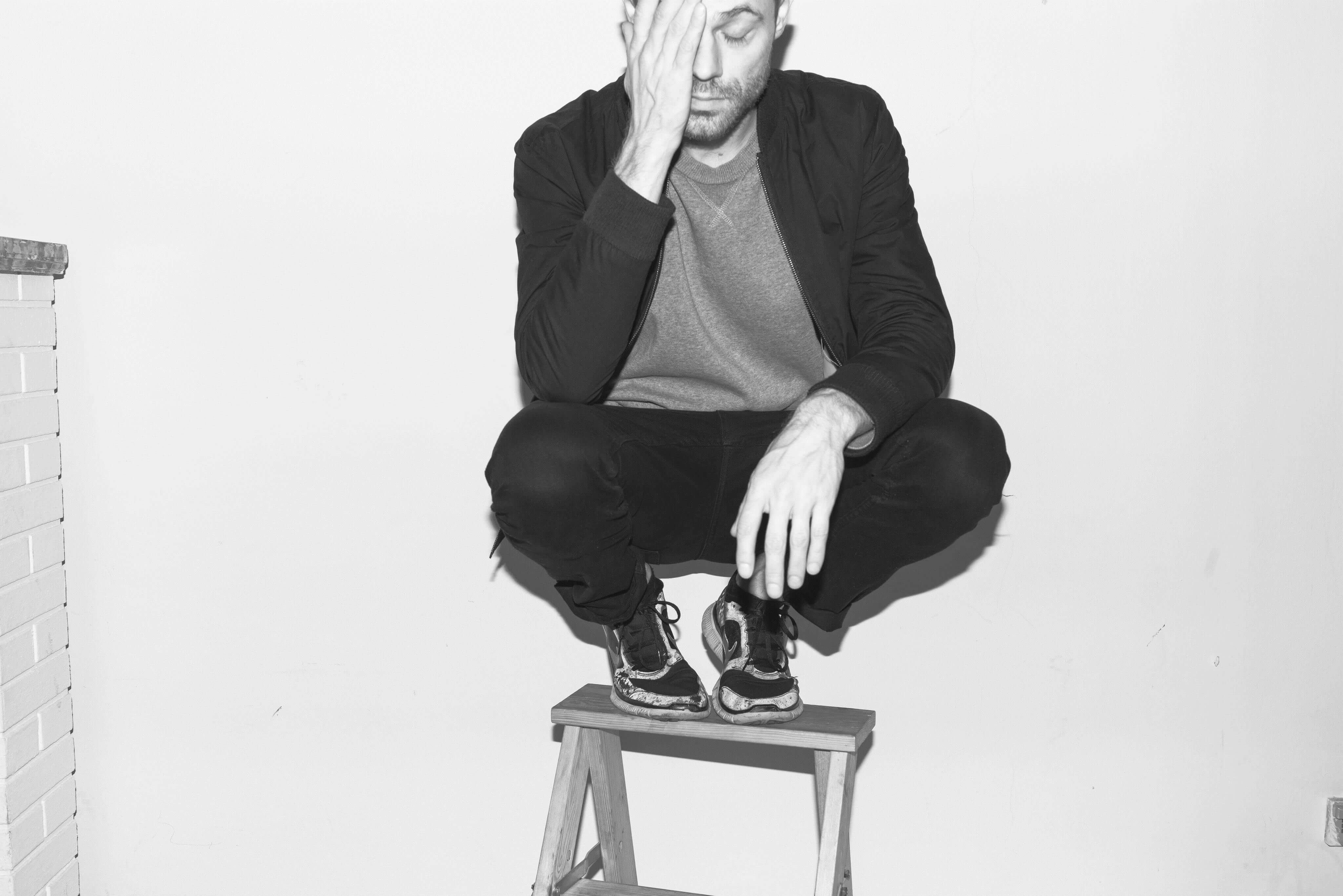
Grzegorz Stefanski, is a film and video artist who lives and works in London and Warsaw. Born in 1983, he trained at the Faculty of Philosophy at the Jagiellonian University in Cracow, Poland and then at Mirosław Balka’s Studio of Spatial Activities at the Fine Arts Academy in Warsaw. In 2016 he received the Felix Slade Award to undertake the MFA degree at Slade School of Art in London.
This year’s prize was judged by Lisa Appignanesi, Dexter Dalwood, Julian Forrester, Jeremy Harding, Deborah Levy and Ryan Wigglesworth.
Dexter Dalwood writes: ‘With the visual artists in particular, the judging panel were keen to shortlist artists who they saw as immersed in their practice. Grezegorz Stefański particularly stood out as someone who was deeply engaged with his work. His three channel video projection ‘restraint’ has been awarded the Ivan Juritz prize this year. It’s a video of two men in uniforms presenting to the camera how to incapacitate a civilian with their bare hands. Stefański has taken as his source a photograph by the artists Mike Mandel and Larry Sultan who from 1975-1977 selected photographs from a multitude of images from picture archives in California. This was one of the first conceptual photographic works of the 1970’s and demonstrated that the meaning of a photograph is conditioned by the context and sequence in which it is seen. Stefański reimagines the photograph with the two men in uniform as Nazis and creates a piece of physical performance that becomes very contemporary and topical in its restaging. The panel all agreed that Stefański has developed a strong body of work that both understands the roots of modernist practice but is also fully of its time’.
Grzegorz Stefanski will receive £1000 and two weeks’ residence at Cove Park in September. Extracts or accounts from each shortlisted entry will be published in the journal Textual Practice.
Runners up
Yarli Allison (Art MFA student, Slade School of Fine Art) ‘Momo the Talking Hair’. A film lamenting the insecure destiny of hair follicles, narrated by a hair called Momo. Momo the Talking Hair.
Manos Charalabopoulos (Music PhD student, King’s College London), ‘Canto’ A musical composition for violin, horn and piano, exploring song and conflict. Canto.
Sarah Hymas (Creative Writing PhD student, University of Liverpool), ‘Recovery’
A prose poem investigating the world of a beach and its ecological shortcomings through what can and can’t be seen. Recovery SHYMAS.
Ali Lewis (Creative Writing MA student, Goldsmiths), ‘Familiar Objects’
Poems defamiliarising ordinary objects such as Book, Popcorn, Phone, Biscuit, Shower, Sponge, Bathtub. Familiar Objects Ivan Juritz Ali Lewis.
2016
Winner: Jocelyn Campbell
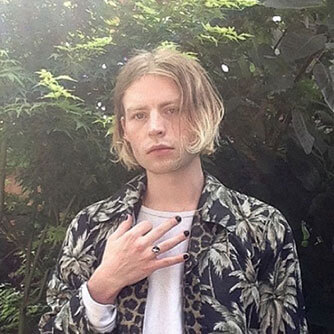
Jocelyn Campbell’s ‘rgn.1 | ‘nt’rl’d’ | rgn.2’ is a composition for piano that experiments inventively and beautifully with systems of musical invention in an attempt to straddle an ambiguous line between ‘modernist’ stylistic traits (its emphasis on formal construction and an abstract, non-teleological musical language) and ‘postmodern’ imitation. Watch the performance of the piece given at the prize-giving at King’s College London or read the description.
Jocelyn Campbell (born 1990) is a London based composer who is currently studying at King’s College London for a PhD. in composition under the supervision of George Benjamin. Jocelyn had previously studied with Silvina Milstien at King’s for a Master’s of Music, and completed a BA in music at Middlesex University under Brian Inglis, François Evans and Peter Fribbins. Ensembles who have played works by Jocelyn include: The Royal Northern Sinfonia, the Lontano Ensemble, the Allegri String Quartet, the Finale Orchestra, the Solarek Piano Trio, Newe Vialles, and Ensemble X.Y., among others.
Runners up
Ziad Nagy’s ‘What Lies Beneath’ is a short animated film that plays with surface and depth and with the relationship between technology and the uncanny in a humorous and original way.
Cecilia Stinton’s Der Gelbe Klang is a collaborative production that creatively and professionally juxtaposes Kandinsky’s colour opera Der Gelbe Klang (1909) with a performance of Franz Schreker’s Kammersymphonie (1916) and Lewis Coenen-Rowe’s new work, A Cosmic Joke (2014). Through innovative puppetry and lighting design Stinton and her team revisited Kandinsky’s classic modernist work from a twenty-first century perspective. Stinton discusses the production in ‘Performing Colour and Staging Sound: Revisiting Kandinsky’s Multimedia Project’.
